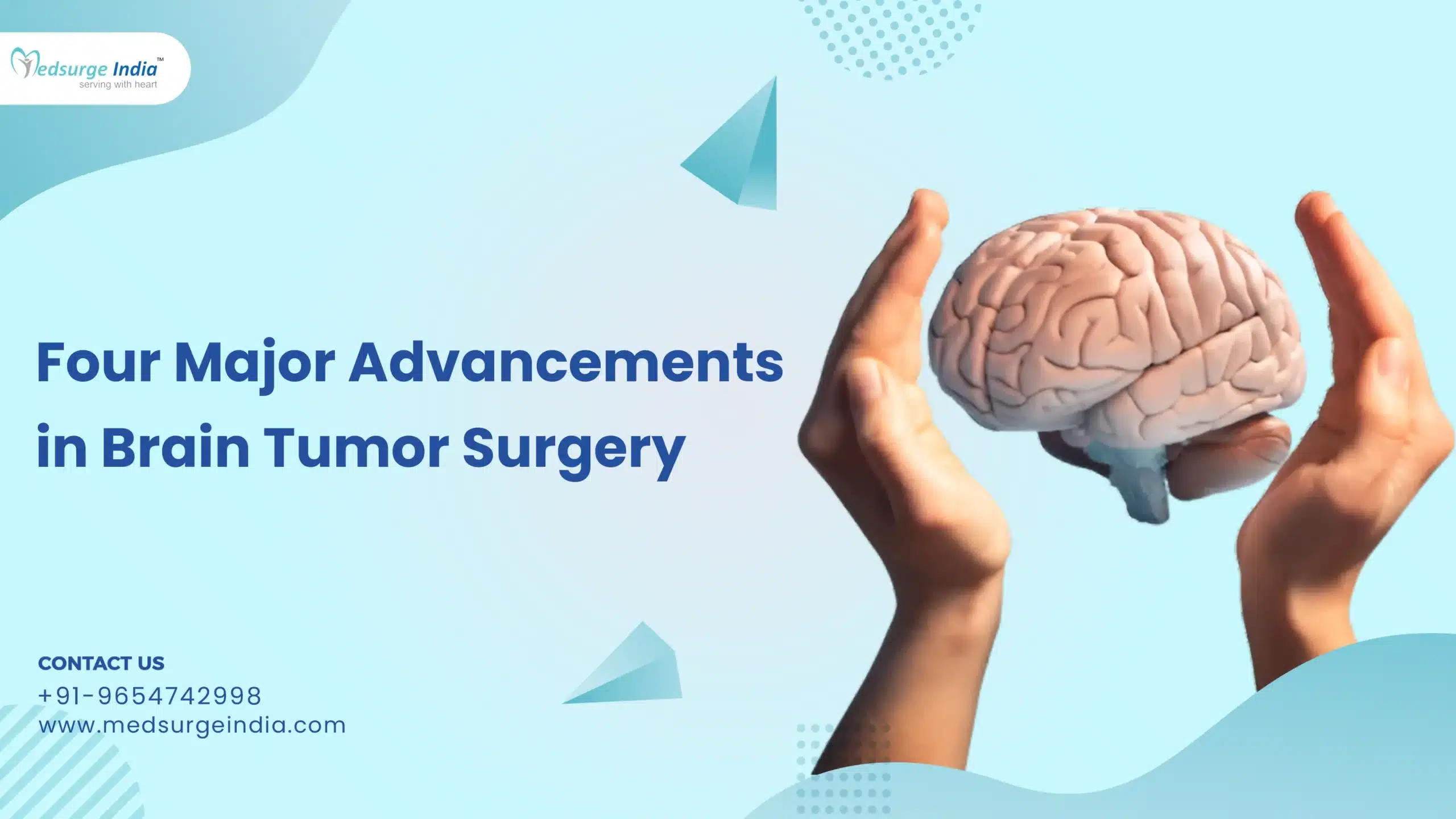
Four Major Advancements in Brain Tumor Surgery
Surgery is the primary treatment of brain tumors. It aims to remove all the tumor cells as safely as possible without harming the nearby tissues. However, removing a brain tumor can be a daunting task, especially if the size of the tumor is large and is located near the important part of the brain. Although it is a challenging procedure, recent advancements in brain tumor surgery make the operation less risky and give a much better outcome.
An Overview Of Brain Tumor
A brain tumor is an abnormal growth of cells in the brain or nearby tissue. The tumor can originate from the brain itself or it can spread from other body parts into the brain. Brain tumors can result in various symptoms from mild to severe depending on the part of the cerebrum affected. Common symptoms include:
- Headache.
- Fatigue.
- Visual problems.
- Confusion and memory problems.
- Motor impairment.
- Seizures.
- Hearing problems.
- Dizziness.
- Weight gain.
The cause of brain tumors is not known. Genetics is involved in some of the cases, but in the majority of the cases, a brain tumor is usually a secondary brain tumor, where the cancer metastasizes from other body parts into the brain.
Moreover, some factors increase the chances of having a brain tumor. These include an increase in age, being exposed to radiation, or having a family history of brain tumors. Also, brain tumors are more common in certain races.
Diagnosis of Brain Tumor
If your physician suspects you may have a brain tumor, several tests and procedures will be performed to confirm the diagnosis. These could consist of:
- Neurological exam.
- CT scan of the head.
- Brain MRI.
- PET scan of the brain.
- Brain biopsy.
Early diagnosis and treatment play a crucial role in the success of brain tumor treatment. If you are being diagnosed with a brain tumor, you may go through our list of the Best Brain Tumor Surgery Hospitals in India to have the best possible treatment right away.
Traditional Technique of Brain Tumor Surgery
A craniotomy is a traditional way of removing brain tumors through a surgical approach. The process involves making an incision on the scalp and cutting a piece of skull bone to access the tumor.
Although craniotomy is the most widely employed method for treating brain tumors, it has several disadvantages. Specific complications of a craniotomy may entail stroke, seizures, brain edema, nerve damage, cerebrospinal fluid leak, and partial mental function loss.
Due to these reasons, researchers and healthcare professionals around the globe are working incessantly to find a better way of brain tumor surgery.
Four Major Advancements in Brain Tumor Surgery
There have been a lot of significant improvements in the field of brain tumor surgery. The four significant developments in brain tumor surgery will be covered in detail below.
1. Stereotactic neurosurgery-
This technique directly applies highly focused radiation to the tumor. It spares more of the healthy tissue and this significantly reduces the side effects of radiation. Additionally, the treatment can be finished in one session saving patients time and the inconvenience of traveling. The two types of stereotactic neurosurgery are:
- Cyberknife-based stereotactic neurosurgery.
- Gamma knife-based stereotactic neurosurgery.
2. Endoscopic brain surgery (neuro endoscopy)–
It allows the removal of brain tumors through the nose without opening the skull. Advancements in technology have made it possible to see inside the nose and brain during surgery. Also, the nose can be accessed with sleek, thin instruments that disturb less of the surrounding healthy tissue.
Compared to craniotomies, endoscopic procedures involve fewer, smaller incisions, allowing quicker recovery and less scarring. Furthermore, the brain does not move as much as it does during craniotomy because pituitary adenomas, meningiomas, and chordomas are approached from the bottom of the brain via the nasal cavity. This promotes a faster healing process and lowers the possibility of harming healthy tissue.
The other advantage is that the brain can be sealed off from the nasal cavity. Debris and germs easily enter the nose, but this method allows to effectively close off the brain from the nasal cavity to stop infections and spinal fluid leaks.
3. Laser interstitial thermal therapy (LITT)–
This technique enables the destruction of the tumor using heat applied through a tiny incision made on the skull. During the procedure, a laser fiber is inserted into the skull and directed toward the tumor. The laser transfers heat and destroys the tumor without damaging the healthy tissues. Using real-time MRI visualization, the brain is continuously observed throughout the process. If any region warms up the heat will be lowered to prevent tissue damage.
The surgeon uses a laser fiber that is inserted into the incision and directed toward the tumor to perform this minimally invasive procedure. Heat is transferred by the laser, killing the tumor and protecting the surrounding healthy tissue. Using real-time MRI visualization, we keep an eye on the patient’s brain to see if any regions warm up. To prevent tissue damage, we can lower the heat if they do.
LITT is now widely used to remove metastatic tumors and tumors that are difficult to access and remove. The average length of the procedure is four hours.
4. Neurosurgical microscopes and neuronavigation–
The advanced neurological microscope provides an excellent view of the depth of the brain. As it provides a precise image of the brain structure, the doctors can see the tumors, the blood vessels, and the surrounding tissue of the tumor as well. This information is helpful for the success of the surgery.
Neuronavigation refers to finding the precise location of the tumor in the brain. An MRI is fused with the navigation device during the surgery. It gathers surgical data and aids in synchronization with the machine. This can be combined with the microscope used in neurosurgery. It will prevent it from getting lost in the brain.
Helpful:- Brain Tumor Surgery Success Rate in India
Benefits of Advanced Brain Tumor Surgery Techniques Over Traditional Techniques
The new techniques of brain tumor surgery have a lot of advantages over traditional craniotomy. Some of them are listed below:
- Less invasive procedure.
- More precise technique.
- Faster recovery.
- Fewer associated risks.
- Less side-effects.
- Shorter treatment duration.
Why Do Foreigners Choose To Have Brain Tumor Surgery in India?
Many foreign patients choose to have brain tumor surgery in India for various reasons. The most common factor is the cost-effectiveness of the treatment. Brain tumor surgery cost in India are much lower as compared to certain developed countries. This makes India an attractive option for patients seeking high-quality treatment at a lower cost.
The excellent expertise of the healthcare professionals, the quality of the treatment, easier communication due to the English proficiency of the Indian medical professionals, and tourism opportunities are the other popular reasons why people opt to have brain tumor surgery in India.
References
https://sahyadrihospital.com/video/advances-in-brain-tumor-surgery/
https://utswmed.org/medblog/4-brain-surgery-advancements/
https://www.hopkinsmedicine.org/health/conditions-and-diseases/brain-tumor/brain-tumor-surgery











